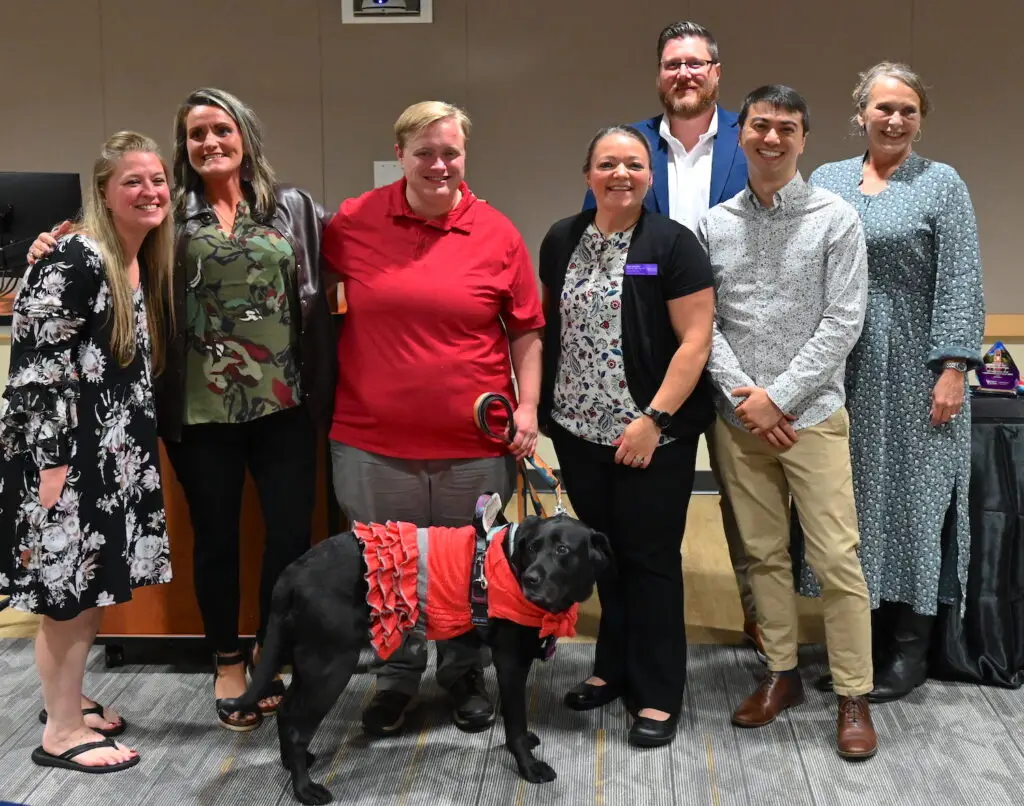Every year, significant amounts of grant funding are distributed by federal and state agencies, national foundations and other funders. Dogwood Health Trust’s Leverage Fund helps bring more of this funding to Western North Carolina by connecting nonprofits and community-based organizations with professional grant writers at no cost.
These dollars do more than just enhance budgets. Diversifying a nonprofit’s funder base reduces financial risk by preventing overreliance on a single funding source. This can create greater long-term sustainability and increase the likelihood that the organization can weather economic fluctuations and policy changes.
Below, you’ll find details on how to apply, key deadlines and other supports available.
Organizations with an active Dogwood grant for some or all of 2025 that:
Additional eligibility for hurricane relief funding:
For the full eligibility criteria, read our FAQs below.

Free access to an experienced grant writer who understands the nonprofit funding landscape
Support for federal, state and foundation grants to maximize your funding opportunities
Help navigating complex applications so you don’t miss important details

The Leverage Fund accepts applications from March 14 through Oct. 1, 2025. During this period, eligible organizations may apply for grant writing assistance.
Choose a path below:
If your organization has previously received support from the Leverage Fund, please proceed directly to the application.
If your organization has not received Leverage Fund support before, begin by completing an “Engage With Us” form. This step ensures alignment with funding priorities before moving forward.
Tell us about your funding need.
If eligible, we’ll connect you with a grant writer.
Get to work on your application.
Let us know your results!
If you are a grantee seeking advice on securing funding from other sources, Dogwood’s Grants Help Desk provides free guidance to eligible nonprofits and municipalities in WNC. This resource is designed to help improve the competitiveness of your grant applications.
Want to strengthen your grant writing skills? Our Next-Level Funding webinars provide expert insights on seeking and securing grant funding.
Each month, Dogwood curates a non-exhaustive list of funding opportunities to help support your work. Download this month’s list.
Sign up to receive the latest grant opportunities delivered straight to your inbox.
Looking for additional funding sources? Check out these grant databases:

Organizations that have an active Dogwood grant for some or all of 2025 and:
Organizations with budgets of more than $5 million, COGS, and municipalities that are:
Note: When a Leverage Fund request is received, we review its eligibility, the organization’s readiness to apply, and fit with the specific funding opportunity. Not all organizations that request Leverage Fund assistance are approved.
Leverage Fund will not provide grant writer support for:
Federal and state grant applications, as well as proposals to private foundations that are located outside the 18 westernmost counties of WNC.
Your organization must be a current Dogwood Health Trust grantee to receive Leverage Fund support or a COG or a municipality located in one of the 12 counties most impacted by Hurricane Helene (Buncombe, Yancey, Mitchell, Avery, Henderson, McDowell, Rutherford, Madison, Polk, Burke, Haywood and Transylvania) seeking funding for hurricane relief and recovery efforts.
No.
Yes. Prior use does not disqualify an organization from using the services in the future. Organizations may use Leverage Fund services up to twice per year.
It depends. Leverage Fund supports collaboration, as opposed to competition, whenever possible. If two or more organizations want to apply for the same grant and will target the same service area and population, those organizations are directly competing; in such instances, Leverage Fund is provided on a first-come, first-served basis. If two organizations are applying to serve different regions or target populations, each organization is eligible to receive Leverage Fund assistance commensurate with its need. Leverage Fund maintains confidentiality and does not share grant application information with other organizations competing for the same funding.
Recipients of Leverage Fund services are asked to sign a Memorandum of Understanding (MOU) that states Dogwood’s expectations of Leverage Fund partners and consultants. At a minimum, all organizations are expected to:
Address:
890 Hendersonville Rd
Asheville, NC 28803
Mailing:
890 Hendersonville Rd
Asheville, NC 28803
Join our mailing list to receive updates on our latest news, funding opportunities, and more.
© 2025 Dogwood Health Trust. All rights reserved.